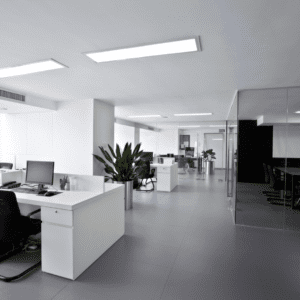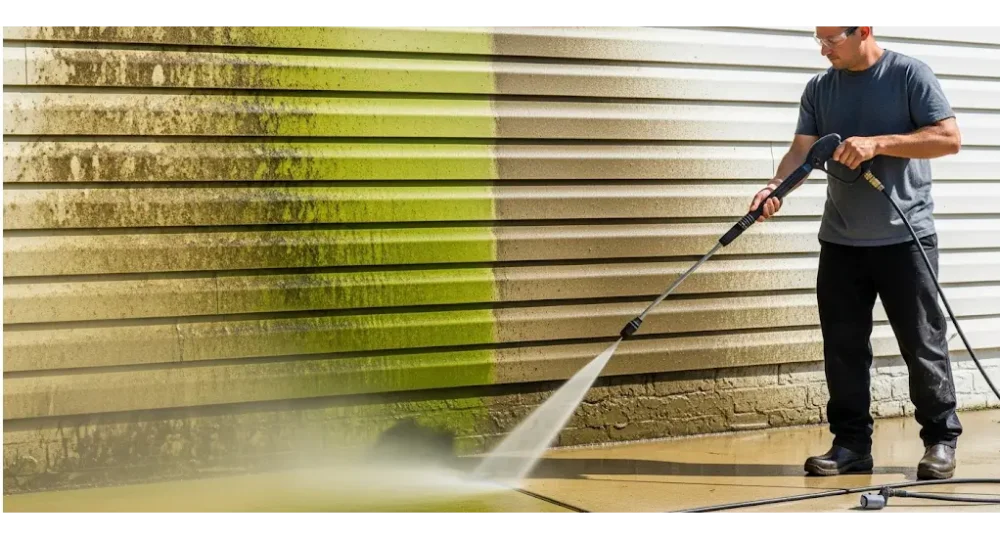
Saul
First impressions matter, and for businesses, the exterior and interior aesthetics play a crucial role in how customers perceive your brand. A well-maintained, freshly painted commercial space can enhance curb appeal, create a welcoming environment, and even boost employee morale. Investing in professional commercial painting services is not just about aesthetics—it’s about long-term maintenance, brand positioning, and ensuring a safe and pleasant workspace.
The Key Benefits of Commercial Painting
1. Enhancing Brand Image and Customer Perception
Your business’s appearance sets the tone for customer expectations. A vibrant, well-chosen color scheme can reinforce your brand identity and leave a lasting impression. Studies show that colors influence consumer behavior, making it essential to choose shades that align with your brand’s personality and message.
2. Protecting Your Investment
Beyond aesthetics, paint acts as a protective layer for your commercial property. Quality commercial painting safeguards your walls from moisture, UV exposure, and general wear and tear, reducing maintenance costs in the long run.
3. Boosting Employee Productivity
A well-painted workspace doesn’t just impress clients; it can also boost employee morale and productivity. Colors like blue and green promote focus and relaxation, while warmer tones like yellow can encourage creativity and energy.
4. Increasing Property Value
A well-maintained commercial property is more attractive to potential buyers or tenants. A fresh coat of paint can significantly increase the value of your property, making it a worthwhile investment.

Types of Commercial Painting Services
Commercial painting goes beyond simply applying a coat of paint. Here are some specialized services businesses can benefit from:
- Exterior Painting: Protects the building against weather conditions while enhancing curb appeal.
- Interior Painting: Creates a clean, professional, and welcoming environment for employees and customers.
- Epoxy Floor Coatings: Ideal for warehouses, garages, and commercial kitchens, providing durability and slip resistance.
- Industrial Painting: Specialized coatings that withstand extreme conditions, including corrosion and chemical exposure.
- Decorative and Branding Elements: Custom designs, murals, and logos to reinforce brand identity.
Choosing the Right Commercial Painting Contractor
Selecting the right contractor is essential to ensuring quality work that aligns with your business needs. Here are some factors to consider:
1. Experience and Expertise
Look for contractors with a proven track record in commercial painting. Check portfolios and client testimonials to gauge their expertise.
2. Licensing and Insurance
Ensure the contractor is licensed and insured to protect your business from liabilities.
3. Use of High-Quality Materials
A reputable contractor will use premium paints and coatings to ensure durability and long-lasting results.
4. Adherence to Safety Standards
Commercial painting often involves working at heights or handling hazardous materials. Choose a contractor that follows strict safety protocols and regulations.
5. Comprehensive Services
A good painting company offers additional services like color consultations, maintenance plans, and surface preparation.

The Impact of Color on Business Environments
Color psychology plays a significant role in how customers and employees feel in a space. Here are some insights into color choices:
- Blue: Enhances trust and productivity, ideal for offices and corporate spaces.
- Red: Evokes excitement and urgency, commonly used in restaurants and retail.
- Green: Promotes relaxation and balance, suitable for healthcare and wellness centers.
- Yellow: Encourages creativity and energy, great for innovation hubs and creative studios.
Environmental Considerations in Commercial Painting
Sustainability is becoming a key factor in commercial painting. Many businesses are opting for low-VOC (volatile organic compounds) and eco-friendly paints that reduce indoor air pollution and environmental impact. Choosing environmentally responsible painting solutions not only benefits the planet but also creates a healthier workspace for employees and customers.
Safety Protocols and Regulations in Commercial Painting
Commercial painting projects often require compliance with local safety and environmental regulations. Professional contractors ensure adherence to OSHA guidelines, proper disposal of hazardous materials, and safe working conditions to minimize risks.
Transform Your Business with Professional Commercial Painting
A professional commercial painting job is an investment in your brand, property, and workforce. Whether you’re looking to refresh your space, enhance your business image, or protect your property, working with experts ensures the best results.
For businesses seeking top-quality commercial painting services, SA Classic Painting offers expertise, premium materials, and unmatched craftsmanship. Visit our services page to explore how they can elevate your business space.
Contact SA Classic Painting today for a free consultation and transform your commercial property with expert painting solutions!
Share:
Related Posts

Pressure Washing in Jacksonville vs. Repainting: Which Saves More?
Property managers often feel the pressure of deciding whether to spend it on repainting their properties or getting pressure washing in Jacksonville to give their

The Red Flags of Unreliable Exterior Painting Contractors
Homeowners tend to focus on cost and schedules when they are hiring exterior painting contractors. They tend to overlook the damage that haste can do

Why Interior Painters in Jacksonville, FL, Recommend Painting Your Home
When homeowners think about updating their living spaces, they probably imagine big renovations taking weeks and costing a fortune. The fastest and most effective refreshment

How House Painters in Jacksonville Pick the Right Hues
Colors can change how a person feels in a place, change their mood, and define the overall feel of a room. A lot of people

How Interior House Painters Can Boost Your Property Value with a Fresh Look
When it comes to making a home more appealing, interior house painters play a very special role that many homeowners tend to overlook. A well-thought-out
